10 Solar Eclipses That Changed Science
Eclipse of the sun

Although they were once feared as an evil omen, solar eclipses have helped to shape human history — and a few solar eclipses, in particular, have helped to guide philosophers and scientists to a better understanding of the heavens and our true place in the universe.
Here is a countdown of 10 solar eclipses that changed science.
Ugarit Eclipse – Syria 1223 B.C.
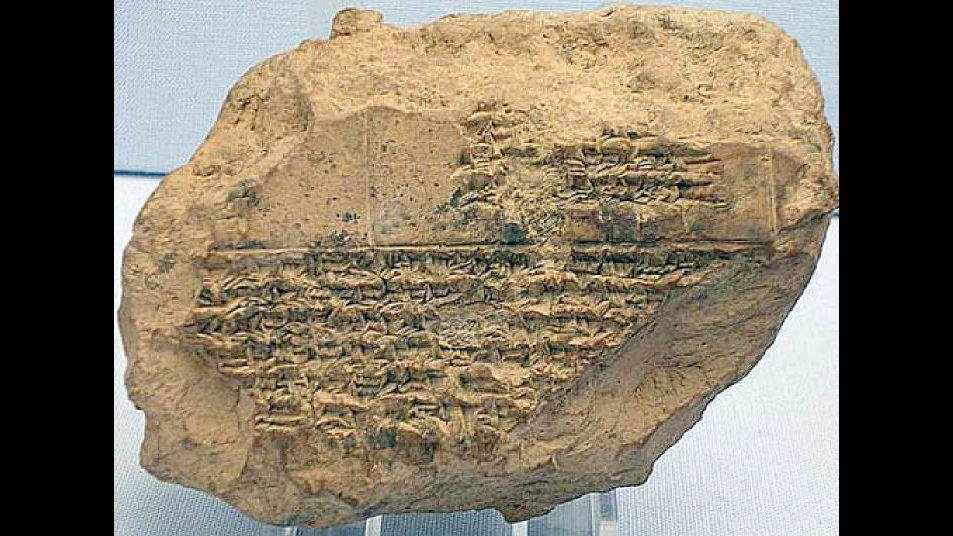
Observations of solar eclipses made by astronomers in Mesopotamia more than 3,000 years ago are among the very earliest astronomical records. In fact, along with other observations gathered by the Babylonians, Assyrians and others in the ancient Middle East, they are the oldest scientific records of any sort whatsoever.
At the time, astrologers believed that solar eclipses, comets and other celestial events could affect human events here on Earth, especially the fates of kings and empires. But their observations for the sake of astrology also mark the earliest known steps taken by humankind on the road to modern science.
The earliest known solar eclipse observation recorded in the Middle East is the Ugarit Eclipse, which was inscribed in cuneiform script on a clay tablet discovered in the Syrian city of Ugarit in the 1940s.
According to a study published in the journal Nature in 1989, the text on the tablet describes a total solar eclipse that occurred on March 5 in 1223 B.C., when Ugarit was part of the Assyrian Empire.
The observation notes that the stars and the planet Mars were visible in the darkness caused by the eclipse: "On the day of the new moon, in the month of Hiyar, the Sun was put to shame, and went down in the daytime, with Mars in attendance."
Get the world’s most fascinating discoveries delivered straight to your inbox.
Anyang Eclipse – China 1302 B.C.
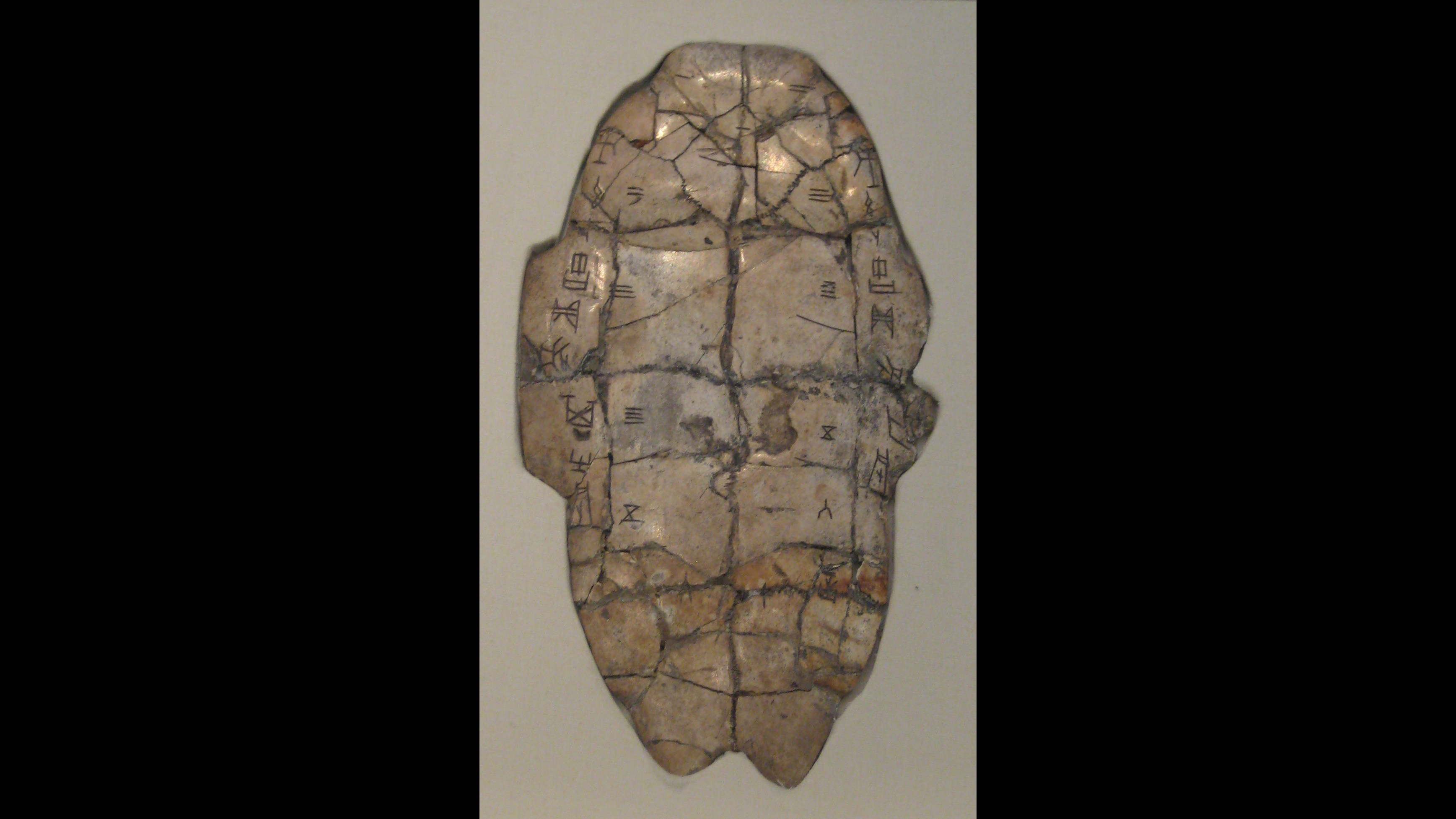
For many years, the Ugarit tablet was thought to describe an eclipse that occurred in 1375 B.C., which would have made it the oldest known eclipse observation.
But since the Ugarit tablet is now thought to refer to 1223 B.C., an observation of the sun made in the city of Anyang in central China in 1302 B.C. is now thought to be the earliest surviving record of a solar eclipse.
It was written in an ancient Chinese script that was scratched onto a flat fragment of tortoise shell, one of thousands of archaeological relics from the period known as "oracle bones," from the later belief that they were magical and could help to foretell the future.
The observation notes that "three flames ate the sun, and big stars were seen," which researchers have interpreted as a description of a total eclipse with three bright streamers of gas in the solar corona, which only becomes visible during an eclipse.
In 1989, astronomers at NASA's Jet Propulsion Laboratory (JPL) used the Anyang observations and lunar eclipse observations from the same period to determine the exact date of the ancient eclipse as June 5, 1302 B.C.
The JPL researchers then used that information in a computer model to show that the Earth's rotation has slowed slightly, by 0.0047 seconds, since 1302 B.C., due to tidal friction — the drag on the spinning Earth caused by the gravitational tug of the moon on the outermost bulge of our planet.
Thales’ Eclipse – Anatolia, 585 B.C.

According to the ancient Greek historian Herodotus, the philosopher, astronomer and mathematician Thales of Miletus predicted a solar eclipse that occurred over Asia Minor in the 6th century B.C.
While there is considerable doubt about the accuracy of the claim, modern astronomers calculate that, if it happened as Herodotus said, then it was probably an annular solar eclipse that was visible over the Middle East on May 28, 585 B.C.
Herodotus also reported that the eclipse took place during a battle beside the Halys River in Anatolia between the Medes and the Lydians, a battle since known to history as the "Battle of the Eclipse."
The sci-fi writer Isaac Asimov noted that this battle was therefore the earliest event in history for which there is an accurate date; while historians of science note that it would also have been the first scientific prediction of any sort of phenomena — at least the first one that actually came true.
Supporters of Thales argue that he could have predicted a likely date when a solar eclipse might occur by using the Saros Cycle, a roughly 18-year cycle in which the pattern of solar and lunar eclipses repeats almost exactly.
The earliest evidence for the use of the Saros Cycle is from Babylonia in around 500 B.C., but it may have been in use much earlier. And it's even possible that Thales may have travelled to Babylonia to learn it.
Anaxagoras’ Eclipse – Greece, 478 B.C.

According to the Greek historian Plutarch and other ancient writers, the philosopher Anaxagoras of Clazomenae was the first to realize that a solar eclipse is caused by the shadow of the moon blotting out the light of the sun, rather than some sort of transformation of the sun itself.
The details of just how Anaxagoras is supposed to have figured this out are not known, but modern historians argue that he may have used the descriptions of eclipses from Greek fishermen and sailors at the Athenian port of Piraeus to learn that the eclipse shadow was only visible over a certain area, and that it passed rapidly across the region from west to east.
Modern astronomers have calculated that an eclipse of the sun on Feb. 17, 478 B.C., which was visible from Athens where Anaxagoras then lived, may have been the eclipse that led to this insight.
On the basis of his eclipse observations, Anaxagoras is also said to have estimated the size of the sun and the moon. The moon, he reasoned, was at least as large as the Peloponnese peninsula in Greece, and the sun had to be many times the size of the moon.
Hipparchus' Eclipse – Greece & Egypt, 189 B.C.
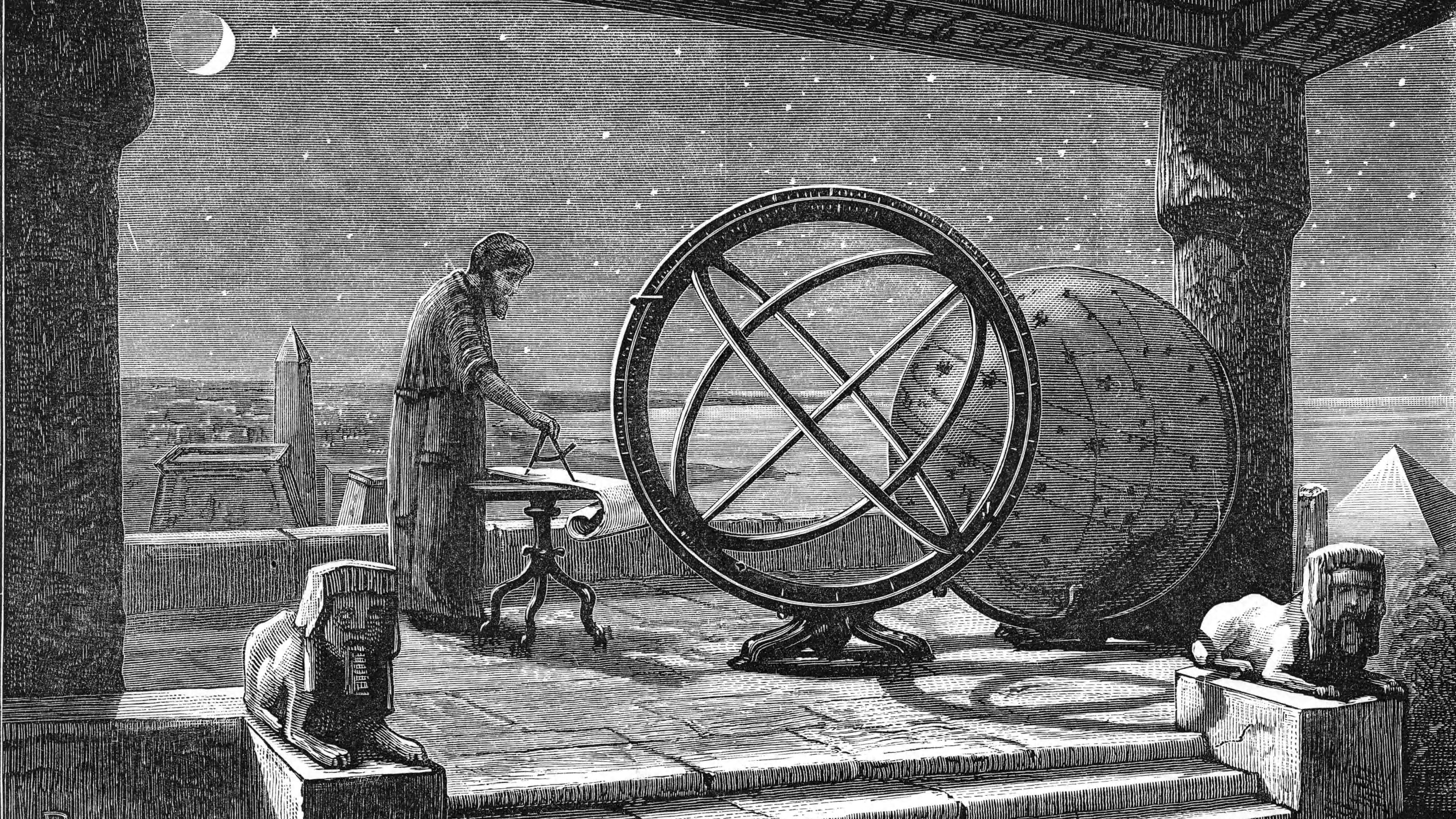
According to the Greek-Egyptian astronomer Claudius Ptolemy, the astronomer Hipparchus of Nicaea was the first to calculate the distance to the moon from the Earth using observations of a solar eclipse that was visible at both Alexandra in Egypt and the Hellespont region of Greece, more than 620 miles (1,000 kilometers) to the north.
Modern astronomers calculate this was probably the eclipse of March 14, 189 B.C.
Hipparchus was a devoted observer who compiled notes on 20 solar and lunar eclipses during his lifetime. After noting that one particular eclipse was total at the Hellespont in Greece, but appeared only as a partial eclipse at Alexandria in Egypt, Hipparchus was able to calculate the distance to the moon relative to the distance on the Earth's surface between the two cities.
By estimating the distance from the Hellespont to Alexandria, Hipparchus calculated that the moon was about 268,000 miles (429,000 kilometers) away from the Earth — a figure that is only about 11 percent greater than the mean distance between the moon and the Earth calculated by modern astronomers.
Halley's Eclipse – England, 1715 A.D.
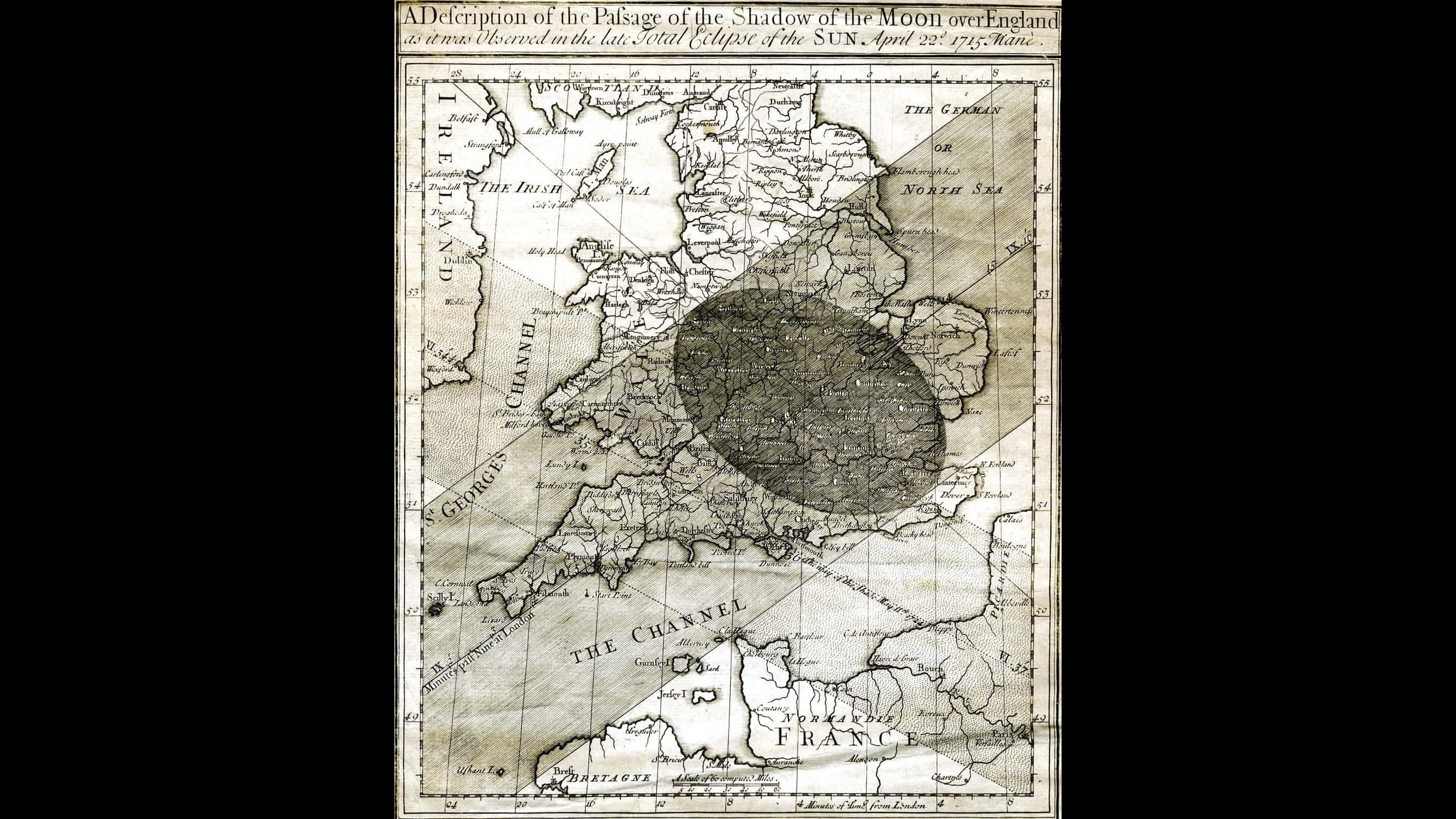
The German astronomer Johannes Kepler developed the modern scientific understanding of solar eclipses in writings published in 1604 and 1605, but he died in 1630 before making any effective predictions.
Credit for the first truly scientific predications of a solar eclipse in history therefore goes to the English astronomer Edmund Halley, who also discovered the famous comet that bears his name.
In 1705, Halley published a prediction for a solar eclipse that would be visible over most of England on May 3 of that year, based on the theory of universal gravitation developed by his friend Sir Isaac Newton.
Halley also published a map of the predicted eclipse path, and called on astronomers and members of the public to make their own observations of the event.
Halley himself observed the eclipse, which turned out to be an annular (or ring-shaped) eclipse, from the building of the Royal Society in London, on an unusually clear morning in the city: "A few seconds before the sun was all hid, there discovered itself round the moon a luminous ring about a digit, or perhaps a tenth part of the moon's diameter, in breadth."
During the event, Halley’s predictions, calculated by hand, were only off by about 4 minutes and about 18 miles (30 km) in distance.
Baily’s Beads – Scotland, 1836

Edmund Halley's observations in 1715 were also the first to record the appearance of a phenomenon that would become known as Baily's Beads – the bright dots of light that appear around the limb of the darkened moon just as the sun disappears behind it,
Halley also figured out the correct reason for the phenomenon: the valleys between hills along the visible edge of the moon, which become flooded with light for a moment while the peaks are in darkness: “…which Appearance could proceed from no other Cause but the Inequalities of the Moon's Surface, there being some elevated parts thereof near the Moon's Southern Pole, by whose Interposition part of that exceedingly fine Filament of Light was intercepted," Halley wrote.
The same phenomenon was observed by English astronomer Francis Baily during an annular eclipse in Scotland in 1836, and although Halley had noted the same effect more than 100 years earlier, the effect has since become known as "Baily's Beads."
A related effect is the "Diamond Ring," shown here in a 2009 eclipse over Japan, which is a final flare of light that is seen when only one "bead" remains.
Northern Europe, 1851
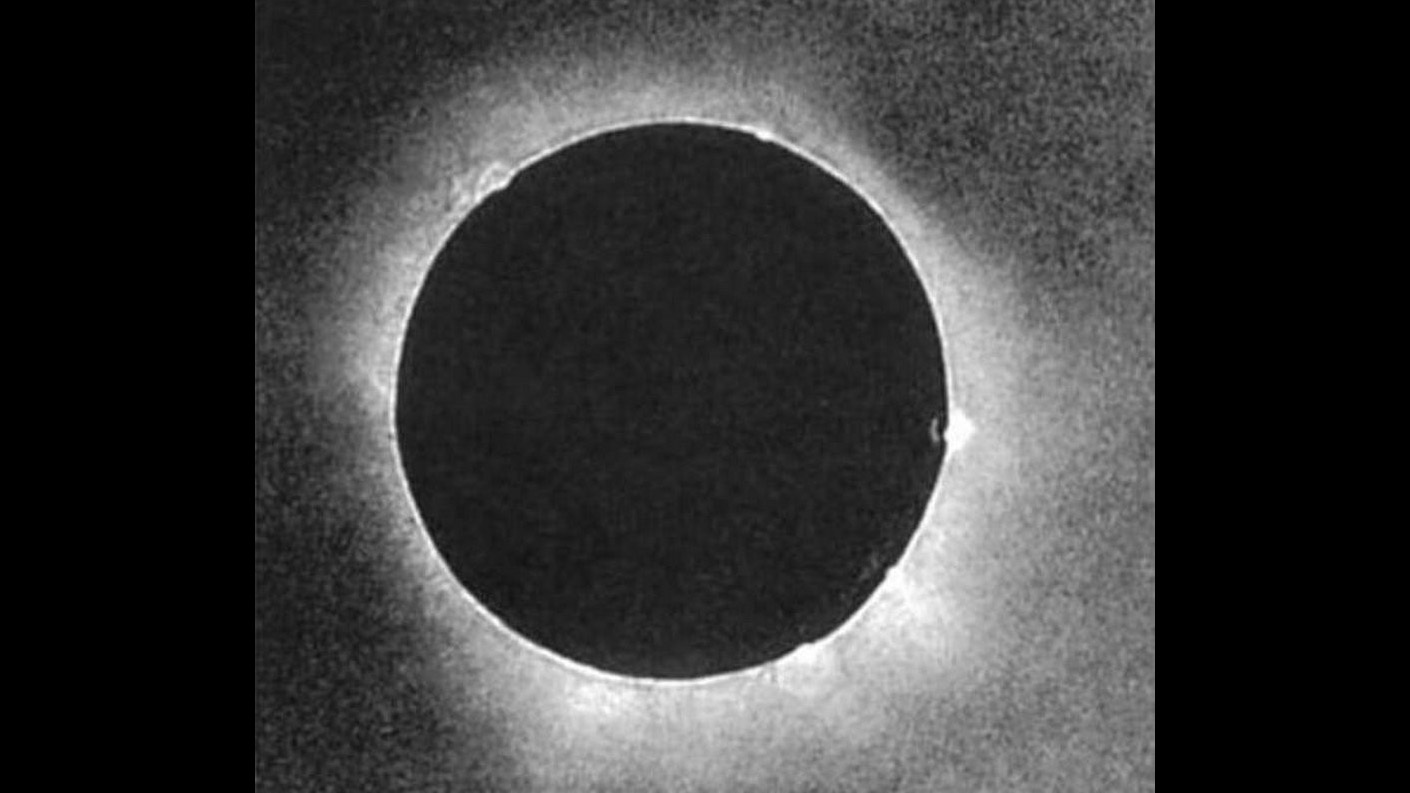
The total solar eclipse over northern Europe on July 28, 1851, set a number of firsts in eclipse science. It was the first eclipse to be the subject of an international expedition by Britain's Royal Astronomical Society (RAS), as well as expeditions by astronomers from many other European countries.
Records of the 1851 eclipse include the first observations of the sun's upper atmosphere, the chromosphere, by the British astronomer George Airy, who was a member of the RAS expedition to Sweden.
Airy first thought that he had seen bright "mountains" on the surface of sun, but later astronomers realized he was seeing small prominences of bright gas called "spicules" that give the chromosphere a jagged appearance
A famous account of the 1851 eclipse was made by another member of the RAS expedition to Norway, John Crouch Adams, who some years earlier had correctly calculated the orbit of Neptune based on deviations in the orbit of the planet Uranus.
"The appearance of the corona, shining with a cold unearthly light, made an impression on my mind which can never be effaced, and an involuntary feeling of loneliness and disquietude came upon me. A party of haymakers, who had been laughing and chatting merrily at their work during the early part of the eclipse, were now seated on the ground, in a group near the telescope, watching what was taking place with the greatest interest, and preserving a profound silence. A crow was the only animal near me; it seemed quite bewildered, croaking and flying backwards and forwards near the ground in an uncertain manner," Airy wrote in a study titled "Account of the Total Eclipse of the Sun on 1851, July 28, as observed at Gottenberg at Christiania, and at Christianstadt, published in November 1851.
The 1851 event also produced the first photograph of a solar eclipse, shown here, which was made by Julius Berkowski at the Royal Observatory in Konigsberg in Prussia, now Kaliningrad in Russia.
Discovery of Helium – India, 1868
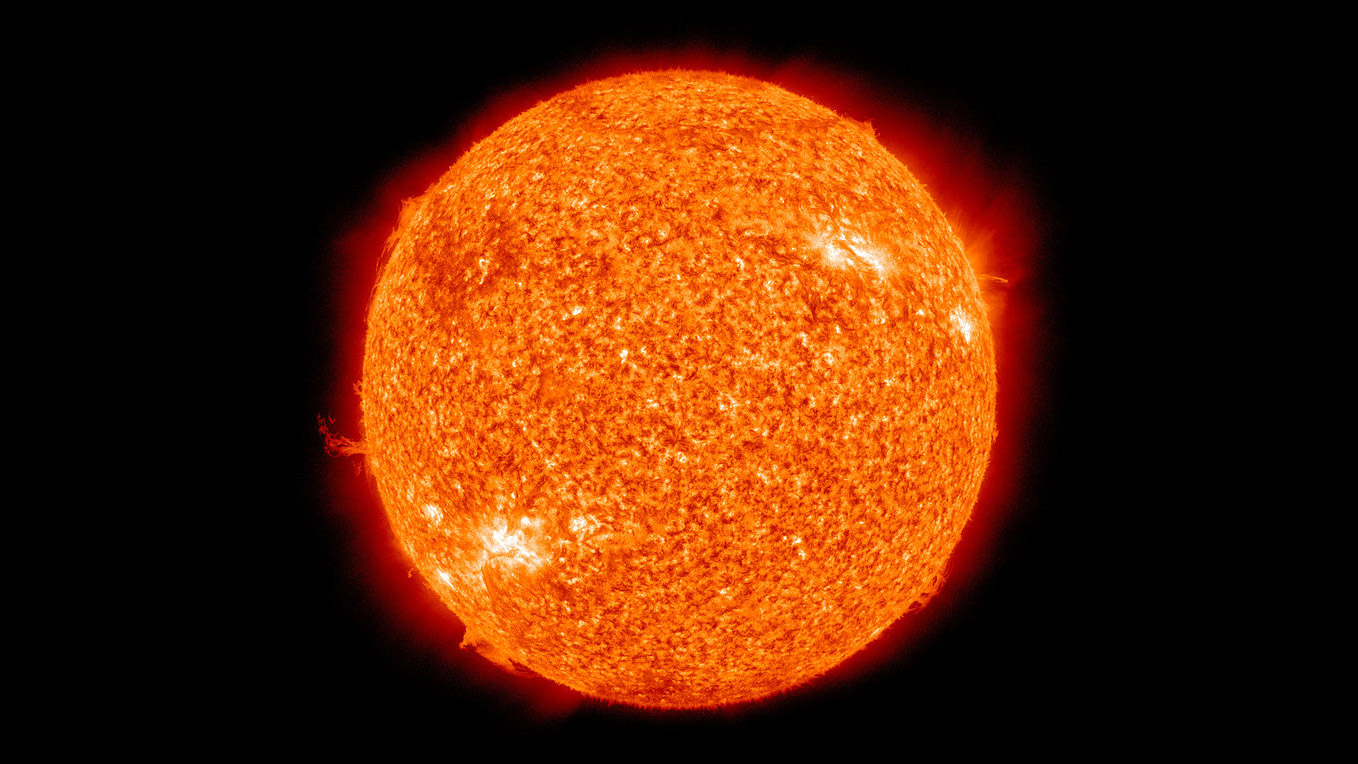
On Aug. 16, 1868, the French astronomer Jules Janssen made photographs of the spectrum of the sun during a total solar eclipse in the eastern Indian city of Guntur.
When analyzing the photograph using the newly discovered science of spectroscopy, Janssen noted the presence of a bright line in the yellow part of the sun's spectrum, which indicated the presence of an unknown gas in the sun's atmosphere, along with common hydrogen.
At first, Janssen assumed the bright line was caused by the element sodium. But within a few months of Janssen’s discovery, the English astronomer Norman Lockyer found the same line in the spectrum of ordinary daylight, and noted that it could not correspond to any known element.
Lockyer called the newly discovered element "helium," after a Greek word for the sun, Helios.
Although abundant inside stars, helium is rare on Earth. It is much lighter than most gases and escapes easily into the upper atmosphere, and from there into space.
After it was found by astronomers in the sun, helium remained unknown on Earth until around 30 years later, when the Scottish chemist William Ramsay discovered deposits of the gas inside a chunk of uranium ore, as the result of the radioactive decay of heavier elements.
This NASA image shows the sun in wavelengths of ultraviolet light caused by excited helium atoms.
Einstein's Eclipse – Africa and South America, 1919
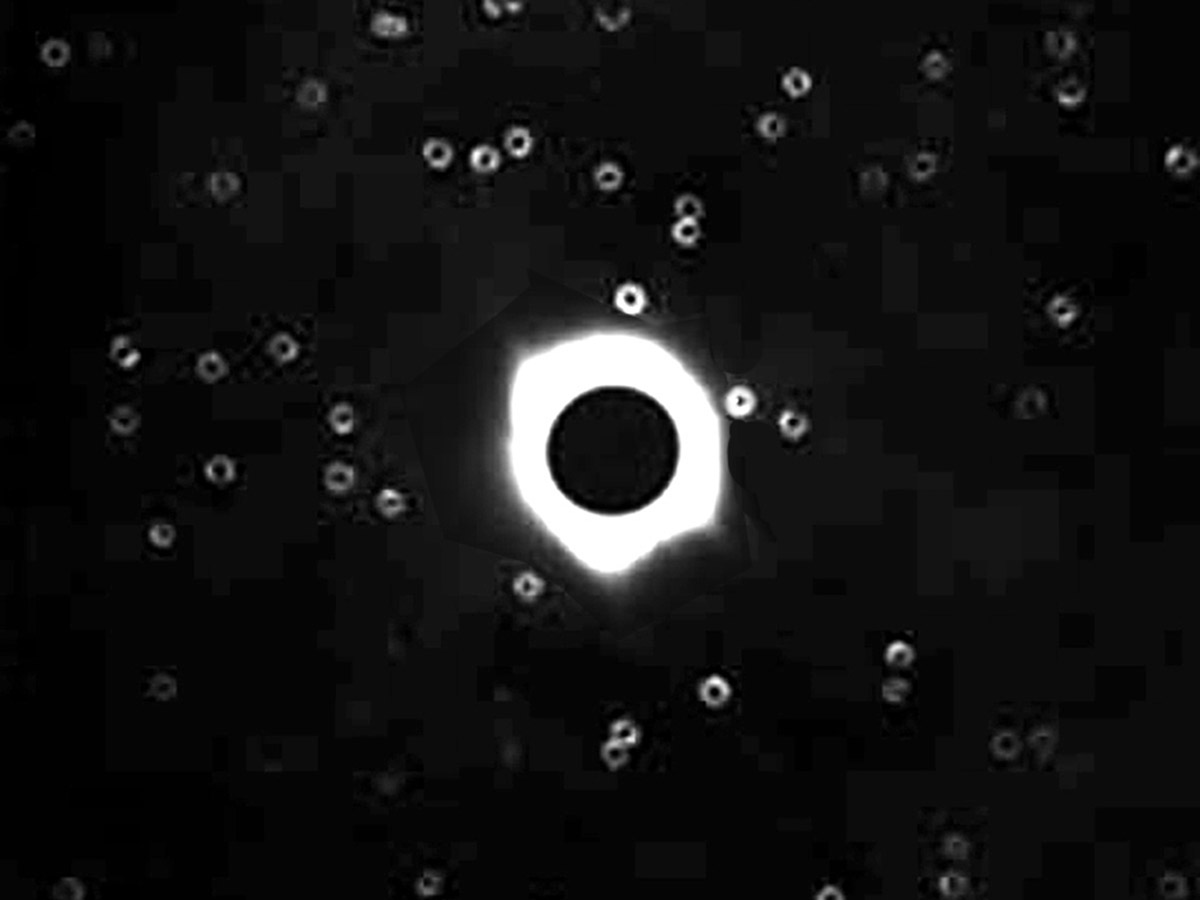
Albert Einstein's theory of general relativity, developed between 1907 and 1915, made the startling prediction that light was affected by gravity — and as a result, rays of light passing near a large object in space, such as the sun, would be refracted or bent.
But the first proof of Einstein's theory wouldn't come until 1919, after observations were made of a total eclipse that was visible from Africa and South America.
The British astronomers Arthur Eddington and Frank Watson Dyson travelled to the island of Principe, off the west coast of Africa, for the event.
They had prepared for the eclipse by accurately measuring the precise locations of the bright stars of the Hyades cluster in the constellation Taurus, which they had calculated would be in the path of the 1919 eclipse.
Armed with the "true" position of the Hyades, Eddington and Watson Dyson then took photographs of the stars during the eclipse totality at Principe. Their photographs show that the light from the Hyades stars was indeed "bent" as it passed close to the sun, resulting in the stars appearing in a slightly different place from their true position, just as Einstein had predicted.
Observations of later eclipses, such as the 1922 eclipse over Africa, the Indian Ocean and Australia, helped to confirm Eddington's observations and Einstein's theories of gravitation and light.
Tom Metcalfe is a freelance journalist and regular Live Science contributor who is based in London in the United Kingdom. Tom writes mainly about science, space, archaeology, the Earth and the oceans. He has also written for the BBC, NBC News, National Geographic, Scientific American, Air & Space, and many others.


